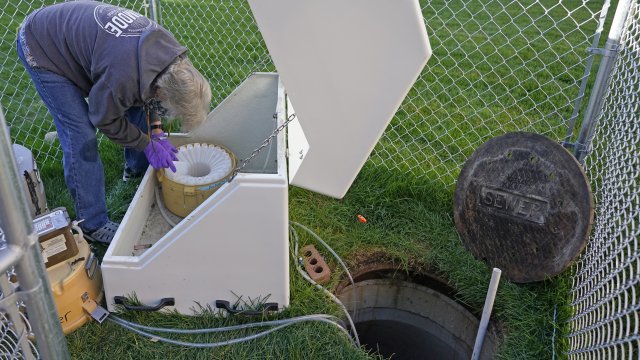Almost anywhere with a sewer connection can help the CDC's system for tracking COVID in wastewater.
The CDC’s NWSS - Network Wastewater Surveillance System - includes labs, like one at University of California, Berkeley, to track COVID cases.
"As you can see here, there's all these tubes, and they just have 200 micro liters of this clear liquid that has all the RNA and DNA from the wastewater sample," said Joaquin Bradley Silva, lab manager at UC Berkeley.
From the samples there, scientists can tell how much of the coronavirus is in an area. The CDC’s NWSS project lead says you can identify it down to the zip code.
Now, they’re starting to share that information with the public on their online COVID tracker. More than 500 sites will begin submitting data in the coming weeks.
Newsy spoke with Alexandria Boehm, a professor of civil engineering at Stanford University who leads a team of researchers testing samples from wastewater processing plants across northern California.
She says that this will help us move from a pandemic to an endemic state.
"It's really exciting that the public can see all the hard work we've been doing and maybe become more educated about how wastewater can provide a glimpse into the public health of their communities," Dr. Boehm said.
Monitoring wastewater provides information on a population in a single sample. It also is less biased than individual case data, which may under-represent asymptomatic infections and cases in communities with lower testing rates.
Some critics have voiced concern about the nuance of interpreting the data.
The CDC’s project lead says their tracker’s main metric will be looking at the percentage change of concentration over a 15-day period. People can also see how many samples tested positive at a site over that same 15 days, but it won’t compare site to site. For example, users won't be able to look at California next to Washington D.C.
This is just the start for what CDC plans to use wastewater surveillance for. By the end of this year, they plan to track other health threats like influenza and E. coli.


